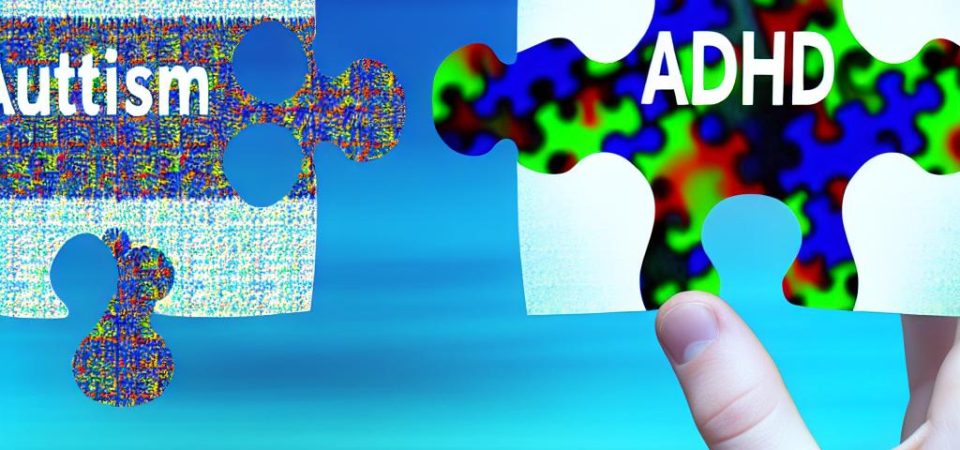The Complex Interplay Between Autism and ADHD
Autism Spectrum Disorder (ASD) and Attention Deficit Hyperactivity Disorder (ADHD) are two neurodevelopmental disorders frequently found together in affected individuals, leading to a nuanced and complex clinical landscape. Understanding the dynamic relationship between these two conditions is essential for accurate diagnosis and effective interventions.
Shared Traits and Differences
ASD and ADHD both impact how the brain develops and functions, particularly influencing how individuals perceive and interact with the world around them. Though they exhibit some overlapping symptoms, such as challenges in communication and social engagement, they are distinguished by specific characteristics.
ASD is characterized by atypical communication styles, restricted and repetitive patterns of behavior, and difficulties with social interaction. These individuals might exhibit intense focus on specific interests and have sensory sensitivities. On the other hand, ADHD is marked by difficulties in maintaining attention, hyperactivity, and impulsive behavior. People with ADHD often struggle with sustaining focus on tasks and may act without considering the consequences.
The Diagnostic and Statistical Manual of Mental Disorders (DSM-5) acknowledges the potential for co-diagnosis, allowing individuals to be diagnosed with both ASD and ADHD. This is crucial because it recognizes the frequent concurrence of these disorders in the same individuals, reflecting the nuanced overlap between their symptomologies.
Prevalence of Co-occurrence
Numerous studies highlight the significant proportion of individuals with ASD who also fulfill the diagnostic criteria for ADHD. Research estimates that between 30% to 50% of children diagnosed with autism also exhibit symptoms consistent with ADHD. This overlap necessitates a meticulous and comprehensive assessment process to ensure that both conditions are correctly identified and managed.
Such prevalence points to a genetic, neurobiological, or environmental linkage between the two disorders, prompting further investigation into shared underlying causes. It’s vital to understand that each condition can profoundly influence the presentation of the other, necessitating a need for joint consideration in clinical settings.
Diagnosis Challenges
One of the main complexities in diagnosing ADHD within the context of ASD is the overlap in symptoms, which can lead to misinterpretation or misdiagnosis. For example, difficulty concentrating is prevalent in both disorders, resulting in confusion over its origin, whether it stems from autism’s attention diversion due to specific interests or ADHD’s recognized inattentiveness.
Furthermore, there is a risk of attributing certain behaviors specific to one disorder to another, muddying the clinical understanding and potentially leading to improper treatment pathways. This is complicated by the fact that many healthcare providers might have more experience with one condition over the other, affecting diagnostic accuracy.
To mitigate these challenges, a multi-disciplinary diagnostic approach is recommended. This involves integrating psychological assessments, behavioral observations, and parental interviews to discern the presence and impact of both conditions accurately. Such an approach helps tease apart the symptoms unique to each disorder, ensuring a more precise diagnosis.
Implications for Treatment
When ASD and ADHD coexist, they require a personalized and nuanced intervention strategy. Behavioral therapies are often employed with a dual focus: enhancing social skills pertinent to ASD and addressing attention-span limitations associated with ADHD. This involves working on social communication, introducing structured routines, and using strategies to enhance focus and reduce distractions.
The use of medication, particularly stimulant medications commonly prescribed for ADHD, may also be considered; however, this requires careful evaluation. Individuals with autism may react differently to these medications, necessitating a cautious approach to avoid potential side effects or interactions that could exacerbate ASD symptoms.
Healthcare providers thus have to carefully balance the interventions, continually monitoring the patient’s response. Combining behavioral interventions with pharmacological options, where appropriate, can help create a comprehensive treatment plan tailored to the individual’s unique needs.
In summary, the dynamic relationship between ASD and ADHD involves an intricate interplay of shared and distinct symptoms. This interplay presents both challenges and opportunities in treatment, emphasizing the need for bespoke strategies that address the complexities of living with both conditions.
Understanding this relationship is crucial for healthcare professionals crafting individualized care plans. Such personalized approaches can significantly improve outcomes for affected individuals, fostering their development and helping them achieve better functionality in daily life.
For further exploration of the interaction between these two conditions, additional resources are available through professional health organizations such as Autism Speaks and CHADD (Children and Adults with Attention-Deficit/Hyperactivity Disorder). These organizations offer a range of resources, from research updates to support networks, contributing to a more profound understanding of both ASD and ADHD.
